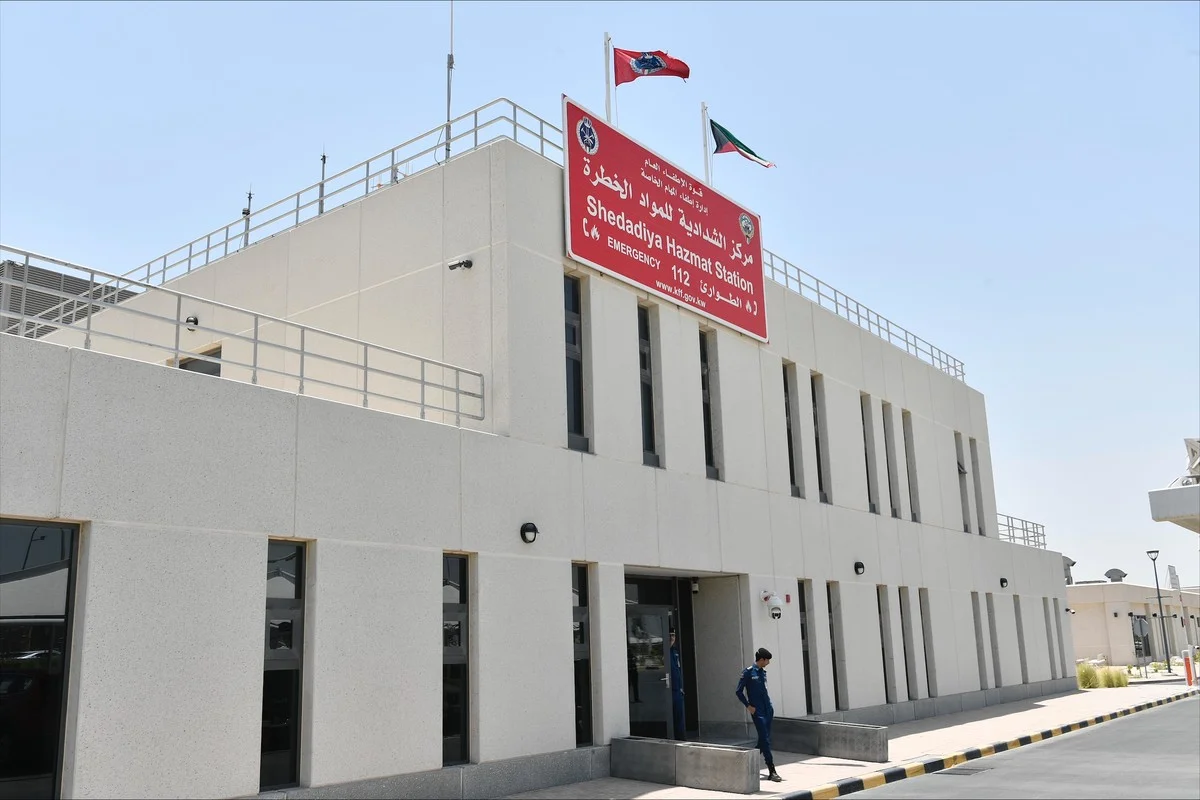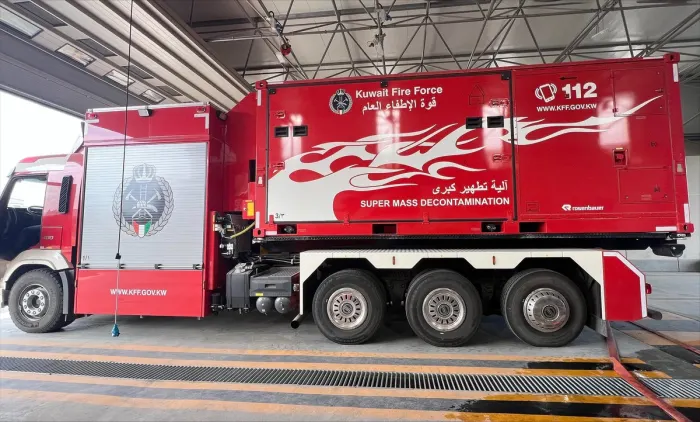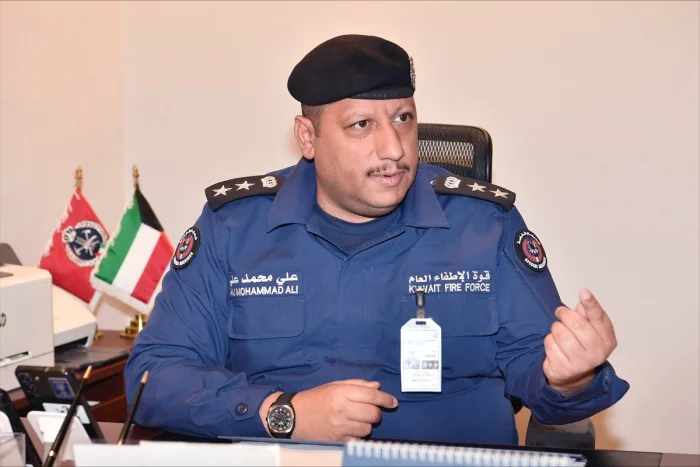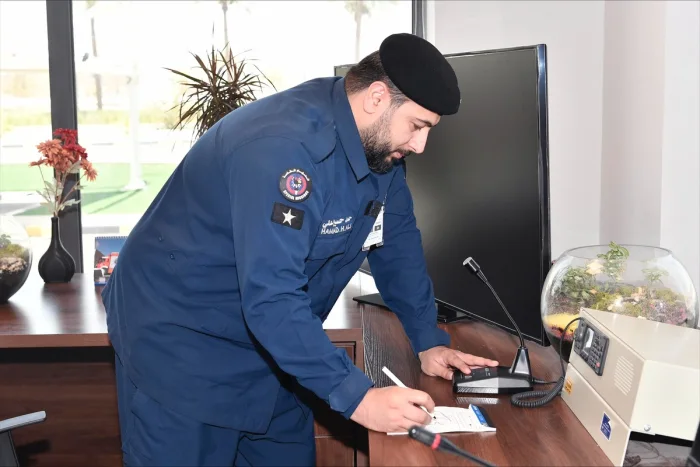17/08/2025
17/08/2025

KUWAIT CITY, Aug 17: Al-Shadadiya Hazardous Materials Center, affiliated with the Kuwait Fire Force (KFF), represents a major strategic step in enhancing preparedness for chemical, biological, and radiological incidents while mitigating associated risks.
Located at Sabah Al-Salem University City, the center is among Kuwait’s first specialized facilities dedicated to handling hazardous substances. Built to modern safety standards and equipped with advanced systems, it supports rapid response both locally and internationally, safeguards lives and property, and provides specialized training to raise public awareness.
Colonel Ali Mohammed Al-Marzouqi, Head of Al-Shadadiya Hazardous Materials Center, told KUNA that the facility is outfitted with cutting-edge devices and vehicles for detection, analysis, and post-incident decontamination. The center operates 10 specialized vehicles, including fire pump units, hazardous materials units with leak-control equipment and decontamination tents, breathing apparatus vehicles, and reconnaissance vehicles designed to detect chemical, biological, radiological, and nuclear threats.
He explained that the decontamination units can process 70 to 100 people per hour. The reconnaissance vehicle is equipped with a mobile laboratory, protective suits, a remote-controlled robot, and weather monitoring systems.
Colonel Al-Marzouqi emphasized that effective hazardous materials response is essential not only for public safety but also for environmental protection, sustainable development, and national security. He described the center as a vital strategic initiative to enhance preparedness for chemical, biological, and radiological incidents while reducing risks associated with hazardous substances.
The center is designed to provide the highest levels of safety and immediate response capabilities, both within Kuwait and internationally. It plays a critical role in training personnel on safe handling of hazardous materials and in promoting environmental awareness across the community.
Colonel Al-Marzouqi detailed the specialized mechanisms available at the center. The fire pump mechanism is deployed during building or vehicle fires and is equipped with rescue tools for road accidents. The hazardous materials mechanism is used for hazardous substances incidents and includes monitoring detectors, leak-stop equipment, personal protective suits, disinfection tents, and breathing devices. The breathing apparatus mechanism contains devices and spare cylinders to support personnel in contaminated environments.
The decontamination unit enhances field readiness through chemical and biological decontamination, ensuring the safety of both personnel and equipment under various operational conditions. Its capacity accommodates up to 70 people per hour. The major disinfection mechanism can disinfect approximately 100 people per hour, reflecting its high efficiency in responding to specialized incidents.
The reconnaissance mechanism is essential for detecting various hazardous substances, including chemical, biological, radiological, and nuclear materials. It is equipped with a mobile laboratory for analyzing liquid and solid substances, protective suits, an automated remote-detection robot, and systems for monitoring weather conditions and wind directions.
Colonel Al-Marzouqi stressed that the Shadadiya Hazardous Materials Center represents a comprehensive, high-tech approach to safeguarding public safety, protecting the environment, and ensuring Kuwait’s rapid and effective response to emergencies involving hazardous materials.





